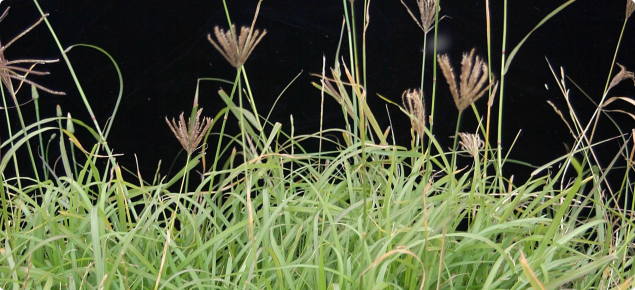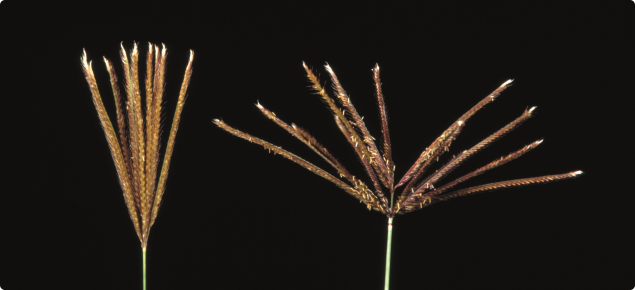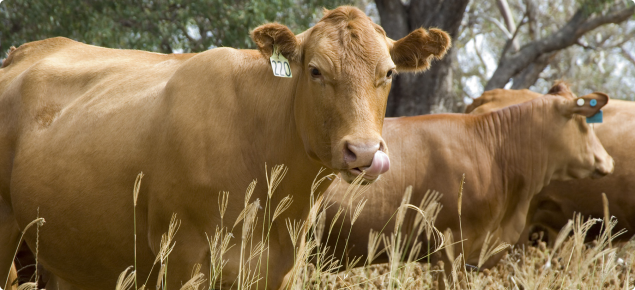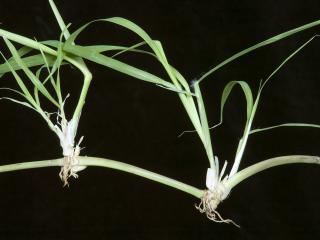Features
Rhodes grass (Chloris gayana) has the following features:
- a creeping perennial which spreads by stolons (runners)
- is adapted to a range of soil and climatic conditions
- is easy to establish with good seedling vigour
- has moderate to high drought tolerance
- has moderate feed quality and palatability
- may not persist under stressful conditions.
Rhodes grass is one of the main sub-tropical grasses used in agriculture and is widely grown in Africa, Australia, Japan, South America and under irrigation in the Middle East for both forage and soil conservation purposes. Rhodes grass is a morphologically variable out-crossing species, which is native to east, central and southern Africa where it occurs in open grasslands. It was introduced into Australia by soldiers returning from the Boer war, who brought with them the common variety (cv ‘Pioneer’).
In southern WA, Rhodes grass has been one of the most widely sown sub-tropical grasses in the last 10 years. It often dominates when sown in a mixture due to its good seedling vigour and ability to spread by runners. The longevity of stands under stressful conditions can be variable, as some Rhodes grass pastures only persist for 1–3 years, due to a combination of stresses including: low fertility, cold-wet soils, frost, over-grazing and competition from annual pastures.
Description
The morphology of Rhodes grass can be described as:
- a stoloniferous and tufted, leafy perennial grass
- with erect or ascending stems 0.5–2 metres (m) tall
- leaves are hairless and 15–50 centimetres (cm) long
- leaves on the stolons are shorter with 2–4 leaves per node
- brown, digitate seed head in the shape of an open hand.




